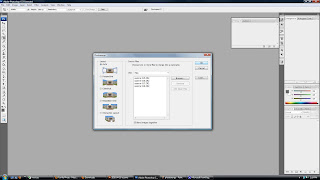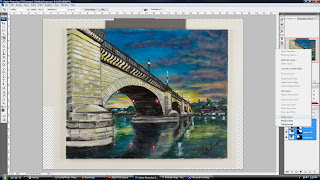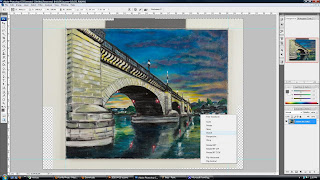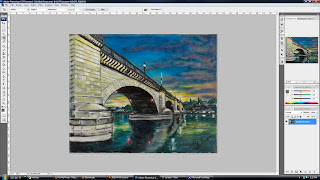17th Annual Carefree Fine Art & Wine Festival
Featuring more than 175 artists, paintings in all mediums, bronzes, photography, pottery, glass wood, mixed media, live musical entertainment, wine & micro-brew tasting, gourmet food and chocolates, $3 entry fee, 10 am - 5 pm
November 5 through November 7
Downtown Carefree, Arizona
Easy & Ho Hum Streets
101 Easy St. Carefree, AZ 85377
Vendor Application: http://www.thunderbirdartists.com/applications.htm
Website: www.thunderbirdartists.com
Phone: 480-837-5637
Artlink First Fridays
Self-guided art tour of central Phoenix, galleries, art spaces, and studios on the First Friday of each month, free shuttle rides around the downtown area to the different galleries from 6-10 pm. You can pick up a shuttle at the Phoenix Art Museum. At the moment, vendors can only participate through the various galleries, as Roosevelt Row is no longer there.
November 5
Downtown Phoenix
Website: www.artlinkphoenix.com
Phone: 602-256-7539
Believe: A Holiday Boutique & Shopping Extravaganza
Shop from more than 100 vendors, BBQ dinner, specialty coffees and tasty treats. Vendor spaces are sold out, but you can still visit and enjoy! Friday: 5pm-9:30pm and Saturday: 10am-3pm
November 5 through November 6
Chandler - Cornerstone Christian Fellowship
1595 S Alma School Rd
Chandler, AZ 85286
website: www.cschandler.com/boutique
40th Annual Litchfield Park Festival of Arts
More than 250 fine artists and craftsman, confectionery booths, wine tasting, and festival eateries, free entry, 9 am - 5 pm
November 6 through November 7
Litchfield Park - downtown
300 W. Wigwam Blvd
Litchfield Park, AZ
Vendor Application: http://www.vermillionpromotions.com/festivals/40thLitchFestArts.php
Website: www.vermillionpromotions.com
Phone: 623-734-6526
36th Annual Fountain Festival of Arts & Crafts
The Fountain Festival of Arts & Crafts features nearly 500 artists, artisans and gourmet food provisioners. Over 200,000 visitors are attracted to this event to do their holiday shopping, purchase art and enjoy good food and live entertainment. 10 am - 5 pm
November 12 through November 14
Fountain Hills
on the Avenue of the Fountains and Saguaro Blvd by Fountain Park
Website: www.fountainhillschamber.com
Phone: 480-837-1654
Cancer Care Unit Arts & Crafts Fair
Kingman's largest and most popular arts & crafts show, benefits Cancer Care Unit.
November 13 through November 14
Kingman - Mohave County Fairgrounds
2600 Fairgrounds Boulevard
Kingman, AZ 86401
Website: http://allaboutkingman.com/annual-kingman-cancer-care-arts-and-crafts-fair
Phone: 928-757-3760
29th Annual Holiday Craft Market
120+ booths of juried work, including jewelry, metalwork, painting, pottery, ceramics, watercolors, food, free, 10 am - 5 pm
November 19 through November 20
Tucson Museum of Art
140 North Main Avenue
Tucson, AZ 85701
Website: http://www.tucsonmuseumofart.org/
Phone: 520-624-2333
Thunderbird Artists Fine Art & Wine Festival
Featuring more than 100 juried fine artists, fine wine tasting and live musicians, $3, 11 am - 6 pm
November 19 through November 21
Phoenix - CityCenter of CityNorth
website: www.thunderbirdartists.com
phone: 480-837-5637
17th Annual ArtFest of Scottsdale
Featuring more than 200 juried artists & craftspeople from across the nation, continuous live music, international foods, family area featuring hands-on art activities and creative challenges for children, “Book Street” Arizona authors, free, 10 am – 5 pm
November 20 through November 21
Scottsdale Civic Center Plaza
75th St. and Indian School Rd.
7380 E. 2nd Street
Scottsdale, AZ 85251
Website: http://www.888artfest.com/art-shows/arizona/17th-annual-artfest-of-scottsdale
Phone: 480-968-5353 or 888-278-3378
Bell Rock Plaza Art and Craft Show
Meet world renowned native and local artisans and take home a little piece of the magical Red Rock region for your own art collection.
November 20 through November 21
Bell Rock Plaza in Sedona
website: http://www.bellrockartshows.com/
Phone: 928-284-9627
Tempe Festival of the Arts
More than 400 juried artists, both local and national, showcase their works, ranging from woodworking to photography to wearable art. For a fee, guests can enjoy wine tastings from local wineries, courtesy of the Arizona Wine Growers Association.
December 3rd- December 5th
Tempe Mill Avenue District
Vendor Application: http://tempefestivalofthearts.com/artisans
Website: www.tempefestivalofthearts.com
Contact Phone: 602-997-2601
Sixth Annual Mesa Arts Festival
Do your holiday shopping outdoors during this annual festival where original works of art are for sale by local and national artists. Live entertainment on two stages will keep you in good holiday spirits. Kids activities, artist demonstrations and food from local vendors should keep all ages happy.
December 11th through December 12
Mesa Arts Center
1 E. Main St. Mesa, AZ, 85211
Website: www.mesaartscenter.com
Phone: 480-644-6500
40th Annual Fourth Avenue Fall Street Fair
400+ arts & craft booths, food, entertainers & musicians from around the US, 2 stages & street performers, “Van Grow” art area for kids, a cross between a fine art show & a carnival, free, 10 am - 6 pm
December 10 through December 12
Tucson
between Ninth St. and University Blvd
website: www.fourthavenue.org
Phone: 520-624-5004
3rd Annual Carefree Christmas Festival
Real snow in the desert, giant cacti glowing and twinkling in the night and an electric light parade that weaves its way around one of the world's largest sundials are just part of the fun at the weekend-long Annual Carefree Christmas Festival. All Events are Free! 45 art & craft and gift booths, 10-15 food concession booths.
Friday-Saturday: 10am-9pm
Sunday: 10am-5pm
December 10th - 12th
At the Carefree Town Center at Sundial Circle
Vendor Application: http://www.magicbirdfestivals.com/festival_exhibitor_info.html
Fourth Avenue Winter Street Fair
The Fourth Avenue Street Fair brings together 400+ arts and crafts booths, 35+ food vendors, 2 stages, street musicians, food, jugglers, street performers, the Free SPIKE kids hands-on-art Pavilion, face painting, balloons, and tons of other fun activities, then packs them into three days of celebration. 10am - 6pm
December 10th through 12th
Tuscon - fourth Avenue
322 n 4th avenue
tucson, arizona 85705
website: http://www.fourthavenue.org/fairs/general-information/
Attention All Artists: The following street fair is on March 5th, 2011, but if you sign up before December 31st, 2010 with the coupon code "early bird", you will receive 20% off of your premium corner or end-cap booth fee.
Tenth Annual m7 Street Fair
Originally consisting of a few six foot tables, a few dozen classic cars and a few hundred people the m7 Street Fair has grown to over 140 booths, food, rides and crafts for the kids, live music, over 200 classic cars, and almost 18,000 visitors. In ten years this award winning event has become one of the most anticipated events of the year! And this year is no different… Come join us for the the fun!
Saturday, March 5, 2011 from 11am until 5pm
Melrose and 7th ave
Phoenix, AZ
website: http://m7streetfair.com/
vendor application: http://m7streetfair.com/merchant-vendors/products-page/


















